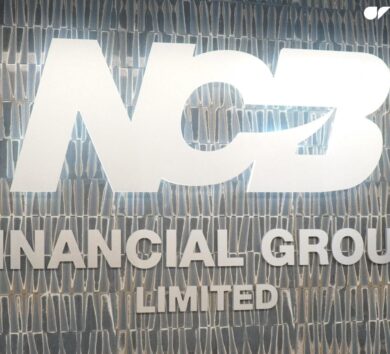

Durrant Pate/Contributor
Renewable energy company Wigton Windfarm Limited has seen its profitability surge during the just-ended June quarter closing on J$97.4 million or 142.5 per cent over a similar period last year.
This translates to approximately 150 per cent growth in its earnings per share (EPS) and represents approximately 250 per cent of last year’s EPS. This was due to a 7.7 million Kilowatt hour (KWh) or 24.0 per cent improvement in production, increasing sales revenue by J$130.9 million or 26.7 per cent over 2023.
Total revenue (sales and other income) for the first was J$712.1 million representing a J$92.3 million or 14.9 per cent increase, when compared to the amount earned in 2023 of J$619.9 million. However, other income went down by J$38.6 million or 30.0 per cent.
While interest income and investment income went up, there were contractions in foreign exchange gain, grant amortisation and carbon credit sales income.
Expenses contracted as balance sheet improves
Total expenses declined by J$6.4 million or 1.6 per cent over 2023 finance expenses also went south by J$14.5 million or 13.6 per cent. The average plant availability was 93.3 per cent compared 89.8 per cent last year.
Expenses, cost of sales, general administrative and share of associates for the quarter contracted by J$6.4 million or 1.6 per cent when compared to 2023. The decline was mainly as a result of the reduced expense through prudent management. Finance expenses were reduced by J$14.5 million or 13.6 per cent when compared to last year, as the company continues to benefit from the results of the restatement of its bonds in March 2022.
Bolstering profitability
Profitable operations year over year have bolstered Wigton’s balance sheet and increased its flexibility to expand through new initiatives currently underway. Total liabilities amounted to J$5.1 billion, marking a significant contraction of J$1 billion or 17 per cent compared to 2023 when liabilities stood at J$6.1 billion.
This reduction primarily resulted from the repayment of quarterly principal instalments for bond.
Throughout the period, the Jamaican stock market-listed company successfully fulfilled all debt covenants, ensuring timely and complete payments of both interest and principal amounts.

At the end of the period, shareholders’ equity amounted to J$5.3 billion, reflecting a J$0.8 billion or 17 per cent increase from the equity of J$4.5 billion in 2023. This growth can be attributed to the reduction in the income tax rate applicable to the Company, from 33.3 to 25 per cent, and enhanced overall performance.
Wigton continues to play its part in the reduction of the negative impact of climate change and is fostering environmental sustainability through its 100 per cent clean energy plant. Given the Government’s recognition of the role and importance of clean energy and the need to reduce Jamaica’s dependence on fossil fuels by increasing electricity generation from renewable energy sources, Wigton remains resolute in its initiatives to increase its investments in clean energy.
Liability and equity
During the reporting period, Wigton experienced a three per cent decrease in total assets, amounting to J$305.9 million as non-current assets dropped seven per cent, totalling J$441.3 million, primarily due to depreciation of the company’s fixed assets.
Ongoing negotiations with key stakeholders are in progress to replace the fully depreciated Wigton Phase I equipment with new equipment, as previously disclosedCurrent assets increased by J$135.3 million or three per cent, reflecting Wigton’s continued management of short-term liquidity.
The renewable energy company maintains a strong financial position with a current ratio of 4.2x, indicating ample liquid assets to meet all short-term financial obligations.







Comments